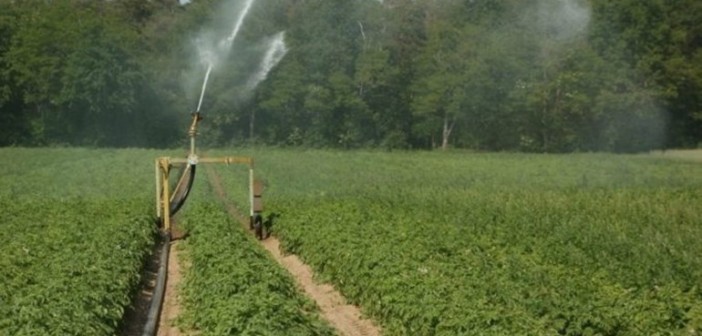The Modi government has taken some excellent steps to address a looming disaster but much more needs to be done to address India’s water crisis, writes India Inc. Founder & CEO Manoj Ladwa.
This week, I will digress from my usual cheerful note to focus on a grave crisis facing India. The country is facing a major water crisis and it troubles me no end when I find that many Indians seem unaware of the looming disaster.
Most are lulled into a false sense of security by folklore about India having abundant water resources, being the land of Ganga, Yamuna and Indus, and the recipient of almost 1,200 mm of annual rainfall.
That is true.
But though India receives about 4,000 cubic meters of rainfall every year, most of it comes during the four-month-long Monsoon from June to September. Then, the rainfall is not always evenly distributed across India. For example, the Monsoon this year has been bountiful so far and forecasts are that it will be in excess of the long term average for the full season. But, large parts of the southern peninsula are facing a rain deficit even as parts of the North East and Gujarat are facing floods.
Indiscriminate dumping of industrial effluents and human and civic waste in rivers has made the Ganga and the Yamuna completely unfit for use. This is also the case with almost every major river in the country.
And finally, groundwater extraction by farmers, industry and citizens across the country mainly as a result of faulty policies and lax implementation of rules has resulted in an alarming fall in groundwater levels across the country. And the absence of any system to treat waste water means that groundwater is being polluted, making it unfit for both individual consumption as well as for farming.
“In 2009, studies by NASA reported that the Indus basin was the second-most over-stressed aquifer in the world. This basin includes the states of Punjab and Haryana, which constitute India’s granaries. This study also noted that the rate of depletion of groundwater levels in north India is about one metre every three years. This is 20 per cent higher than the earlier assessment by the water ministry and indicates the true gravity of the situation,” says a recent article in ‘Quartz’ by three globally renowned scholars.
A major culprit is the politically sensitive issue of providing free or heavily subsidised electricity to farmers to run their pumps.
Let me just sum up this litany of India’s water woes by saying that the situation is distressing. Official records show that as many as 70 per cent of Indians do not have access to safe drinking water. An Asian Development Bank report says India will have a water deficit of about 50 per cent by 2030.
The signs are ominous. India is home to several inter-state disputes over sharing of river waters, most prominently between Punjab, Haryana and Delhi over sharing the waters of the Sutlej and in the south between Karnataka and Tamil Nadu over the waters of the Kaveri. There have been major protests and dozens of farmer suicides in states like Andhra Pradesh, Maharashtra, Karnataka and Tamil Nadu – the states with the most stressed groundwater resources.
Decades of neglect and politically rewarding, but ecologically disastrous, practices have brought things to such a pass.
On the positive side, the Narendra Modi government has taken note of the creeping crisis and is taking measures to address the issue.
In line with the Prime Minister’s slogan of “Har khet ko pani” (water for every farm), Finance Minister Arun Jaitley allocated more than $4 billion to increase the coverage of irrigation in his last Budget. As is well known, India’s irrigation network does not reach about 50 per cent of farms. Result: these farmers have to depend on the vagaries of Monsoon or use pumps to extract groundwater.
India signed several agreements with Israel to improve the efficiency of water use during Modi’s recent visit to that country. They didn’t get much space in the media, which was more interested in the security-related deals but these water pacts, in my opinion, will prove much more important and impact every Indian positively in the long run. Already, Israeli agricultural scientists and companies who have turned their arid homeland into a desert oasis are helping Indian farmers master the art of drip irrigation in order to get “more crop per drop”.
Apart from pollution and falling groundwater levels, the major problem is that India does not have a system of canals to carry water from regions with excess to those in deficit.
To overcome this issue, the government has decided to implement the scheme to inter-link rivers by a network of reservoirs and canals so that the excess water from the Monsoon rains can be stored and water from surplus regions can be supplied to those facing shortages.
The Modi government has taken up this ambitious project, which was first proposed during the British Raj but not implemented by successive governments, in right earnest.
It has three parts – the first to inter-link the Himalayan rivers in North India, a second to connect the rivers in Peninsular India, and the third a plan on intra-state river linking. The National Water Development Agency has conducted detailed studies and prepared reports on 14 inter-link projects in North India, 16 projects in South India and 37 intra-state river linking projects.
The plan is controversial; make no mistake about that. Those in favour of the project say it is the answer to the crisis of water shortage, but those against claim that it can cause incalculable ecological damage that invariably accompany projects that tinker with nature.
My own feeling is that any project that brings water to parched areas is good, so long as the government ensures that adequate safeguards are taken to mitigate the damage that this project will cause to the natural environment.
Then, the government needs reliable data on groundwater availability. India has four central organisations regulating groundwater use but there is no single database covering the entire country. Creating such a database has been recommended by the Indian Parliament’s Standing Committee on Water Resources but, unfortunately, nothing has come of it so far.
Right now, no Indian city supplies tap water that humans can drink without facing health problems.
Though the Modi government is alive to the problem and is taking steps to mitigate it, progress on the ground is not yet commensurate with the dire necessity for prompt action.
![]() I can only hope that the government launches a flagship initiative to recharge India’s water resources in a time-bound manner. Without that, I fear that the “Sujalam suphalam malayaja sheetalam shasya shyamalam maataram” (Bountiful in water, green and fertile, my motherland, I bow to you: from India’s national song) that all of us so love will slowly become an arid wasteland. That is the worst case scenario.
I can only hope that the government launches a flagship initiative to recharge India’s water resources in a time-bound manner. Without that, I fear that the “Sujalam suphalam malayaja sheetalam shasya shyamalam maataram” (Bountiful in water, green and fertile, my motherland, I bow to you: from India’s national song) that all of us so love will slowly become an arid wasteland. That is the worst case scenario.
Of course, there is also hope that the river linking project and the steps being taken to bring all Indian farms under the cover of irrigation will stave off the crisis and turn the doomsday clock back.
Overcoming India’s water crisis is a project for the greatest social good of a sixth of humanity, but it also presents a big business opportunity for both for-profit as well as social enterprises. It is a niche and specialised area in which India has only limited experience. And this opens up a potentially humungous market for European and US firms that have the necessary expertise. The many large foundations in the West can also participate in this project in collaboration with Indian NGOs as part of their CSR programmes.
The time for everyone to act is now. The silver lining on this dark cloud is that the government is alive to the problem.
Manoj Ladwa is the founder of India Inc. and chief executive of MLS Chase Group @manojladwa







